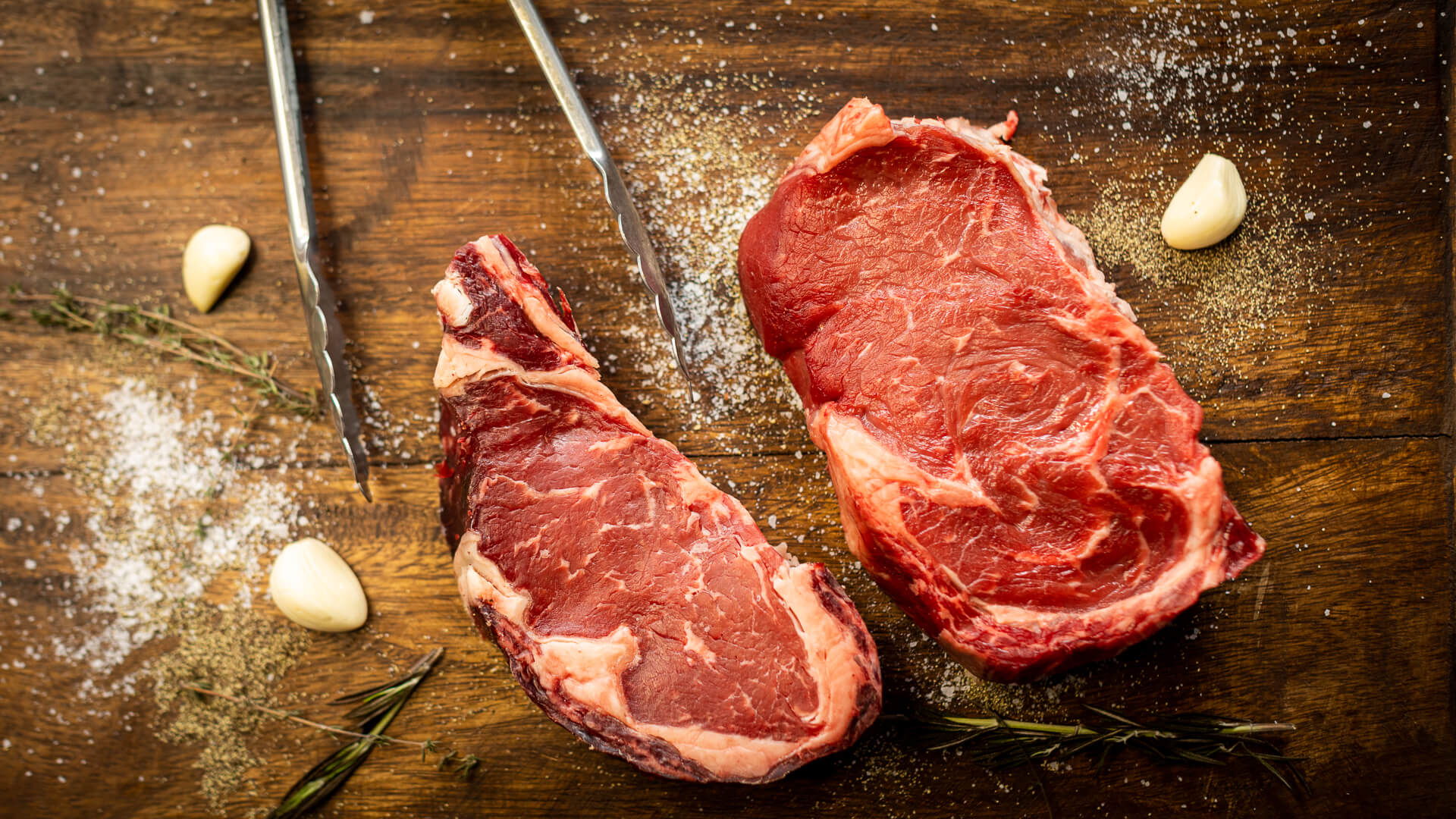Ingredients
- One 2 – 5 lb Cut of Meat

Equipment
- Vacuum Seal Chamber
- Or
- Vacuum Sealer
- Cooling rack that fits in your refrigerator
- Umai Bags (Ribeye) (Roast)
- Vac Mouse (if using a food saver)(included with Umai Bags)
- Chef’s Knife
Timing
Active Time: 5 – 10 Minutes
Total Time: 28 – 45 days
Yield
Varies depending size, cut, and aging time.
-
Choose & Prepare Meat
Choose a large cut of meat to dry age. Dry aging single steaks is not a great idea since the amount of waste would be much greater than the usable portion.
When dry aging a steak sanitation is very important. Always clean all surfaces with food safe sanitizing solutions prior to preparing the steak.
I prefer to trim any large pieces of fat off the outside of the steak. This gives the meat more surface area to breathe. The moisture from the steak will not permeate through the layer of fat. If you prefer to leave the fat on you can do so. Finally trim off any visible or accessible silver skin. You do not need to chase the silverskin deep into the meat, just trim what is visible.
Make sure the meat is not dry to the touch. This can happen if it is left out for too long (also something you want to avoid). If the meat is damp you can proceed to the next step. If it is dry in any spots just brush it with some water.
-
Place Inside Umai Bag
Choose the correct sized umai bag for the cut of meat you have. You do not want to over stuff the umai bag as it could tear when vacuum sealing.
If there are any exposed bones I like to cover them with a paper towel or cheese cloth. This way they do not puncture the umai bags. This will be east to trim off after the dry aging is finished.
Roll the bag onto itself like a shirt sleeve. Doing this will ensure that the bag will not have any fat or water on the seal. Once the meat has been placed in the bag unroll the bag carefully to keep it dry.
-
Seal Umai Bag
If you have a vacuum seal chamber the umai bag with the meat can be placed in it directly and sealed. The umai bag will not remove 100% of the air even at a full vacuum.
If you are using a food saver you will need to use a “Vac-Mouse” which is provided with the umai bags and will help get a better seal on the meat. When using, place the vac-mouse directly on the sealing strip of the food saver. Seal the bag twice to ensure you get a proper seal.
Fill out a sticker with the sealed date and the date you would like to remove the meat either 28-45 days for your first tests should be good.
-
Age Steak
Place the meat in any refrigerator on a cooling rack to ensure there is airflow.
After a few days the umai bag will be stuck to the outside of the meat as it has formed a pellicle. This is a good sign.
Allow it to dry for 28-45 days.
-
Trim Pellicle
Once the meat has been dry aged it can be removed from the umai bag.
Cut the umai bag and peel it off of the outside of the meat. Gently trim the thin layer of pellicle. Do your best to not create too much waste. Take your time with this step.
If you notice any off-putting smells, green, blue, or black mold. Discard immediately.
Once this is finished you can store or cook the steak as you normally would.
-
Cook Dry Aged Steak
Be mindful the steak has lost a lot of water so it will cook faster than normal so be sure to check the temperature of the steak for proper doneness.
Also when cooking dry aged steaks the color of the finished steak may seem a little darker. For instance a medium rare steak cooked to 125°F can look like a medium doneness steak.





 Based on 12 Review(s)
Based on 12 Review(s)
